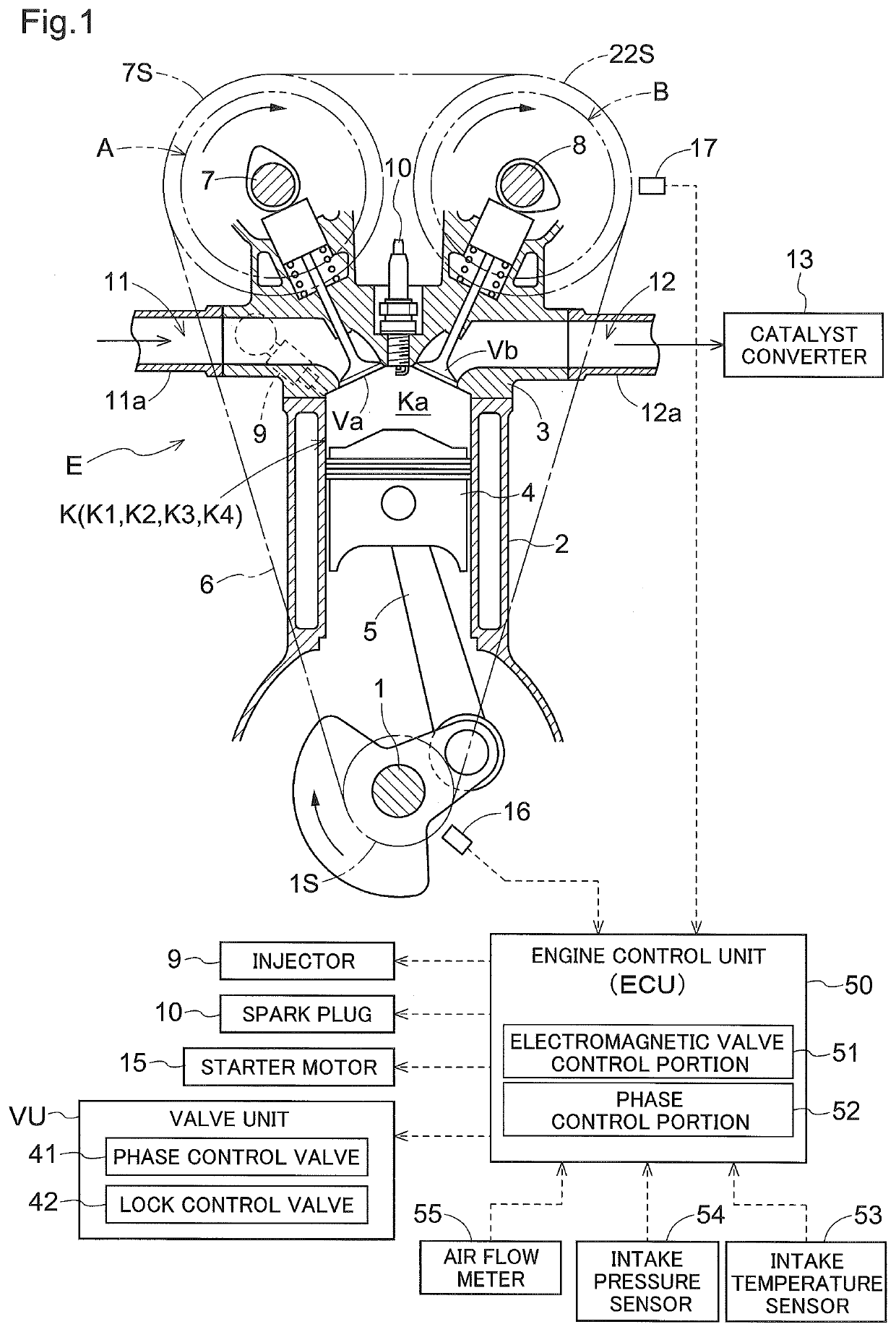Control device for internal combustion engine
a control device and internal combustion engine technology, applied in the direction of electric control, valve drive, combustion-air/fuel-air treatment, etc., can solve the problems of unburned hc (hydrocarbon) generated due to incomplete combustion, unburned hc is likely to be emitted to the outside, etc., and achieve the effect of reliable introduction into the combustion chamber
- Summary
- Abstract
- Description
- Claims
- Application Information
AI Technical Summary
Benefits of technology
Problems solved by technology
Method used
Image
Examples
Embodiment Construction
[0031]Hereinafter, an embodiment of the present invention will be described based on the drawings. However, the present invention is not limited to the following embodiment, and various modifications may be made without departing from the gist of the invention.
[0032]As shown in FIGS. 1 and 2, a control device for an internal combustion engine includes an engine E (an example of an internal combustion engine), an intake-side valve opening-closing timing control device A for setting timings of opening and closing each intake valve Va in the engine E, an exhaust-side valve opening-closing timing control device B for setting timings of opening and closing each exhaust valve Vb in the engine E, and an engine control unit (ECU) 50 for controlling the engine E.
(Internal Combustion Engine)
[0033]The engine E shown in FIG. 1 is provided in a vehicle, such as a passenger car. The engine E includes four cylinders K, a piston 4, a crankshaft 1, an intake passage 11, an exhaust passage 12, an int...
PUM
 Login to View More
Login to View More Abstract
Description
Claims
Application Information
 Login to View More
Login to View More - R&D
- Intellectual Property
- Life Sciences
- Materials
- Tech Scout
- Unparalleled Data Quality
- Higher Quality Content
- 60% Fewer Hallucinations
Browse by: Latest US Patents, China's latest patents, Technical Efficacy Thesaurus, Application Domain, Technology Topic, Popular Technical Reports.
© 2025 PatSnap. All rights reserved.Legal|Privacy policy|Modern Slavery Act Transparency Statement|Sitemap|About US| Contact US: help@patsnap.com



